A number of Hygienic Norms have been adopted that prescribe the maximum permissible concentrations for certain polluting substances in workplace air, ambient air of residential areas and in water bodies used for drinking and municipal purposes.
Workplace air
Maximum permissible concentrations (threshold limit values – TLVs) in workplace air have been adopted for four polluting substances. These substances include:
- Ammonium perchlorate (CAS 7790-98-9), hazard class II, TLV – 1,0 mg per cubic meter (adopted by Hygienic Norms GN 2.2.5.3399—16);
- 1,1,4,4-Tetramethyl-2-tetrazene (CAS 6130-87-6), hazard class III, TLV – 3,0 mg per cubic meter. Special eye protection is required (adopted by Hygienic Norms GN 2.2.5.3397—16);
- 1,1-Dimethylhydrazine (CAS 57-14-7), hazard class I, carcinogen, TLV – 0,1 mg per cubic meter (adopted by Hygienic Norm GN 2.2.5.3393—16; and
- Octogen (CAS 2691-41-0), hazard class III, TLV – 1,5 mg per cubic meter (adopted by Hygienic Norm GN 2.2.5.3391—16).
Facilities where exposure to the above substances is possible, are required to ensure that the concentration of such substances in workplace air does not exceed the set TLVs.
Ambient air of residential areas
Hygienic Norm GN 2.1.6.3400—16 sets out the maximum permissible concentration (MAC) for ammonium perchlorate in the ambient air of residential areas as 0,01 average daily concentration. The hazard class for the substance is set as II. Organisations emitting this substance into the ambient air are required to ensure that its concentration at the border of the sanitary protection zone (i.e. the area separating industrial and residential areas) does not exceed the set MAC.
Water bodies used for drinking purposes
Maximum allowable concentrations for the following 2 substances has been adopted:
- Ammonium perchlorate (CAS 7790-98-9), hazard class II, MAC – 2,0 mg per litre (adopted by Hygienic Norm GN 2.1.5.3396—16); and
- 1,1,4,4-Tetramethyl-2-tetrazene (CAS 6130-87-6), hazard class III, MAC 1,0*10(-3) (adopted by Hygienic Norm GN 2.1.5.3392—16).
Facilities that discharge wastewater containing these substances into water bodies used for drinking purposes are required to ensure that the concentration of these substances at the points of discharge does not exceed the set MACs.





